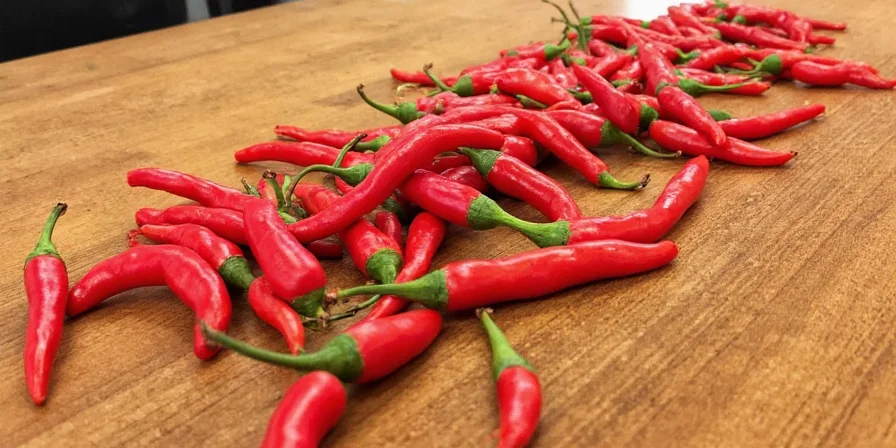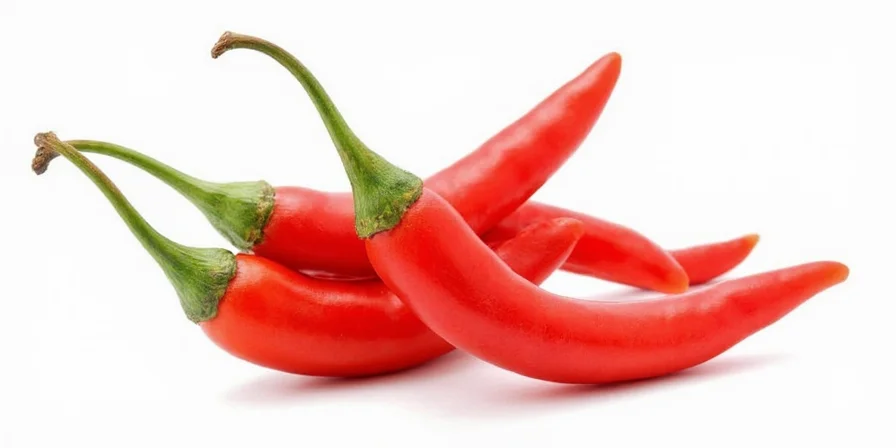Stop burning your hands and ruining dishes! This guide gives you the exact steps to handle any chili pepper safely while unlocking their full flavor potential. You'll learn which peppers to use for specific dishes, how to control heat levels, and professional techniques to avoid common kitchen disasters.
Understanding Chili Peppers: Quick Reference Guide
Most home cooks struggle with chili peppers because they don't understand the simple relationship between pepper type, preparation method, and heat level. The key insight: 90% of the heat comes from the white membranes, not the seeds. Remove these membranes first for precise heat control without losing flavor.

Why Your Previous Chili Pepper Experiences Failed
If you've ever burned your mouth, ruined a dish with excessive heat, or suffered from painful hands after handling peppers, you're not alone. These common problems happen because:
- You were taught to remove seeds (the wrong part) instead of membranes (the actual heat source)
- You didn't know that cooking method dramatically changes heat perception
- You used the wrong pepper variety for your dish's flavor profile

Chili Pepper Cheat Sheet: What to Buy at the Grocery Store
Forget confusing Scoville numbers. Here's exactly which peppers to use for common cooking scenarios:
| Common Cooking Need | Best Pepper Choice | Preparation Tip | Expected Heat Level |
|---|---|---|---|
| Adding subtle warmth to soups | Ancho (dried poblano) | Toast 2 minutes before adding | Mild, similar to black pepper |
| Salsa with noticeable kick | Hatch green chile | Roast first for sweeter flavor | Medium (adjust with membrane removal) |
| Authentic spicy curry | Fresno or Thai bird chili | Add early in cooking for full integration | Hot but controllable |
| "Wow" factor for experienced eaters | Habanero (use HALF) | Remove ALL membranes, mince tiny | Very hot (start with 1/4 pepper) |

Immediate Relief: What to Do When Your Hands Are Burning
When capsaicin burns your skin, water makes it worse. Do this instead:
- Wash with rubbing alcohol (70% isopropyl) - dissolves the oil-based capsaicin
- Follow with soap and cold water
- Apply vegetable oil or milk to remaining residue
- Never touch your face until hands are completely clean
How to Handle Any Chili Pepper Without Burning Your Skin
The professional method home cooks don't know:
- Gloves: Use nitrile (latex won't protect you)
- Cutting board: Designate one specifically for hot peppers
- Cutting technique: Slice lengthwise, scrape out white membranes with spoon
- Cleanup: Wipe surfaces with alcohol before soap
- Emergency: Keep dairy products nearby for accidental face contact

Your Most Common Chili Pepper Questions Answered
Why do my hands still burn after washing with soap and water?
Capsaicin (the heat compound) is oil-based, so water spreads it rather than removing it. Soap alone isn't sufficient. Proper remedy: 1) Wash with rubbing alcohol first to dissolve the oil, 2) Then use soap and cold water, 3) Apply milk or vegetable oil to remaining residue. For severe burns, soak hands in whole milk for 15 minutes.
How can I reduce the heat in a dish that's already too spicy?
Immediate fixes that actually work: 1) Add dairy (sour cream, yogurt, milk) - casein binds to capsaicin, 2) Add sugar or honey (1 tsp at a time), 3) Add acid (lime juice or vinegar), 4) Add more non-spicy ingredients to dilute. Never add more heat (like more peppers) thinking it will balance - this is a dangerous myth. For soups/stews, adding a peeled potato can absorb some heat while cooking.
Which is hotter, red or green jalapeño?
Ripeness affects flavor more than heat. Green jalapeños have grassy, vegetal notes while red ones are fruitier, but their heat range (2,500-8,000 SHU) remains similar. The real heat difference comes from growing conditions and individual pepper variation. For reliable heat control, always remove the white membranes regardless of color.
Can I use frozen chili peppers instead of fresh?
Yes, but with adjustments: Freezing ruptures cell walls, releasing more capsaicin. Use 25% less frozen chili than fresh for equivalent heat. Thaw frozen peppers completely before using, and pat dry to prevent water from spreading the heat compounds. Flash-frozen peppers retain better flavor than store-frozen varieties.
Simple Flavor Pairing Guide for Perfect Results Every Time
Match these common ingredients with the right pepper for balanced flavor:
- Tomatoes: Jalapeño or serrano (acidity enhances fruit notes)
- Chocolate: Ancho or chipotle (smoky depth complements cocoa)
- Mango/Pineapple: Habanero (tropical fruit enhances fruit notes)
- Corn: Poblano (earthy notes complement sweetness)
- Beans: Cayenne (sharp heat cuts through starchiness)
When to Worry About Chili Pepper Safety
Most home cooks never need to worry, but take these precautions with super-hot peppers (habanero and above):
- Never use blenders with ghost peppers or scorpion peppers - aerosolized capsaicin can cause breathing problems
- Work in well-ventilated areas when handling extremely hot varieties
- Keep children and pets out of the kitchen during preparation
- If you experience difficulty breathing after exposure, seek medical help immediately

Practical Next Steps for Better Cooking Tonight
Start implementing these changes immediately:
- Next time you cook with peppers, remove ONLY the white membranes
- Try one new pepper variety using our cheat sheet above
- Keep milk or yogurt nearby when cooking with hot peppers
- Designate one cutting board exclusively for hot peppers
- Store nitrile gloves in your kitchen drawer for pepper emergencies

Why This Approach Works When Others Failed You
Most chili pepper guides focus on extreme heat levels or scientific details you don't need. This method works because it addresses your actual kitchen problems with actionable steps. You're not trying to become a chili head - you just want to use peppers to enhance flavor without disaster. By focusing on practical handling techniques and flavor pairing rather than Scoville numbers, you'll gain confidence with every dish you prepare.











 浙公网安备
33010002000092号
浙公网安备
33010002000092号 浙B2-20120091-4
浙B2-20120091-4